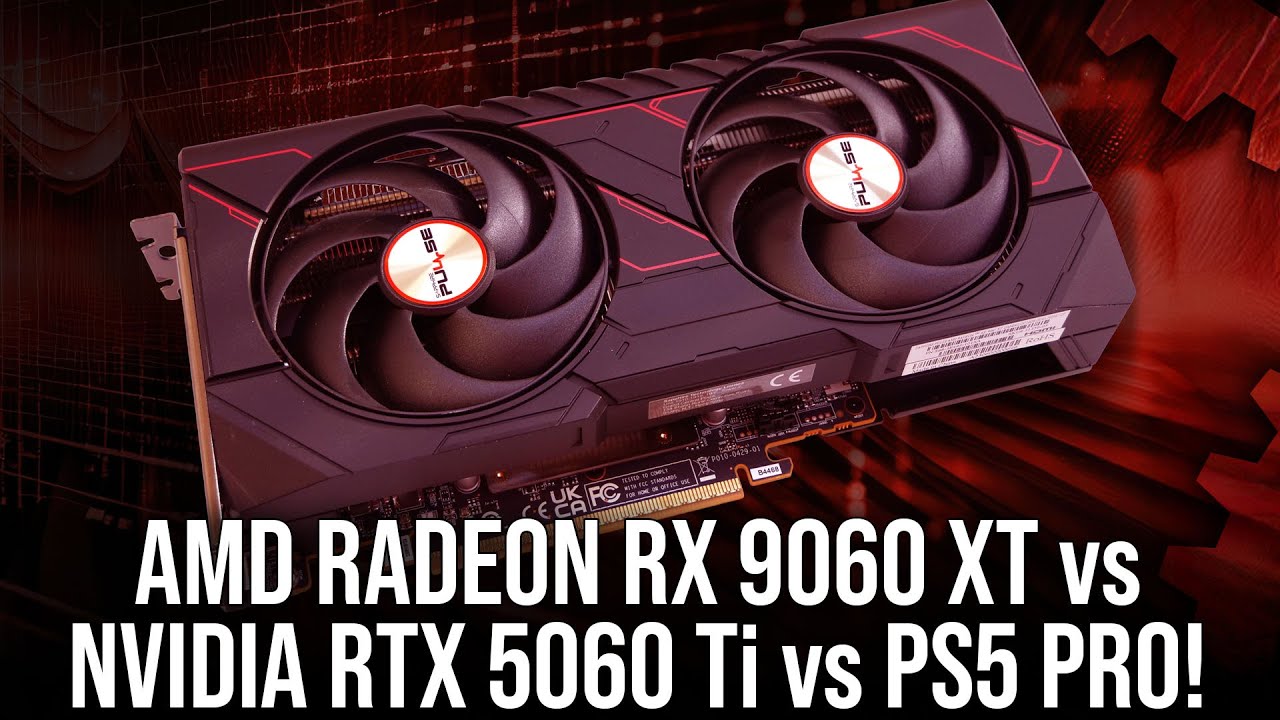The AMD Radeon RX 9060 XT 16GB offers strong rasterization performance comparable to the RTX 5060 Ti at a more affordable price, making it a compelling mainstream GPU with good power efficiency and VRAM capacity. While it lags behind Nvidia in ray tracing and upscaling features, it delivers near-console-level performance and is a solid alternative for gamers seeking value and decent RT capabilities.
The video reviews the AMD Radeon RX 9060 XT 16GB graphics card, focusing on its value proposition and performance compared to Nvidia’s RTX 5060 and 5060 Ti, as well as the PlayStation 5 Pro. The reviewer highlights that the 16GB model offers a compelling alternative at $350, especially given its performance level, which rivals that of a $700 PS5 Pro. The Sapphire Pulse Edition is used for testing, showcasing a card that is quiet, straightforward, and well-suited for mainstream gaming with basic connectivity options. AMD’s approach with this card emphasizes offering high performance at a lower price point, making it an attractive choice for gamers seeking good rasterization and RT performance without overspending.
Performance analysis reveals that the RX 9060 XT is roughly half of AMD’s higher-end 9070 XT but with higher clock speeds and power consumption. In rasterization tests across various titles, the card performs around 90% of the RTX 5060 Ti’s performance while consuming about 25% more power. Compared to the older AMD 6800 XT, the 9060 XT is slightly slower but more power-efficient. RT workloads show the AMD card’s clocks dropping significantly under heavy ray tracing, with Nvidia’s RTX cards maintaining better efficiency and performance, especially in RT-heavy scenarios. Despite this, the 9060 XT offers competitive performance in rasterization, often matching or surpassing the RTX 5060 in less demanding scenes.
The review also covers the impact of PCIe bandwidth limitations on performance, especially on older systems with PCIe 3.0 interfaces. Tests indicate that bandwidth constraints cause only minor frame rate drops (around 1-2%), with slight performance dips in ray tracing scenarios. When directly comparing the 9060 XT to Nvidia’s 8GB models, the AMD card generally matches or slightly trails the RTX 5060 but outperforms the 5060 Ti in some rasterization tests, offering better value for money. The reviewer emphasizes that 8GB VRAM models are increasingly problematic in demanding games, with performance collapsing when VRAM is exceeded, reinforcing the importance of 16GB cards for longevity.
In the final sections, the video compares the 9060 XT’s performance to the PlayStation 5 Pro, demonstrating that the AMD card can achieve similar rasterization performance levels, even with RT features. When upscaled to 4K using FSR4 or DLSS, the PC GPUs can match or surpass the console experience, although Nvidia’s higher support for upscaling features gives it an edge. The reviewer notes that Nvidia’s hardware and software support still lead in RT and upscaling features, but AMD’s 9060 XT offers excellent value at its price point, delivering near-pro console-level performance for a fraction of the cost. Overall, the card is seen as a strong mainstream option, though Nvidia’s features and support remain a significant advantage.
